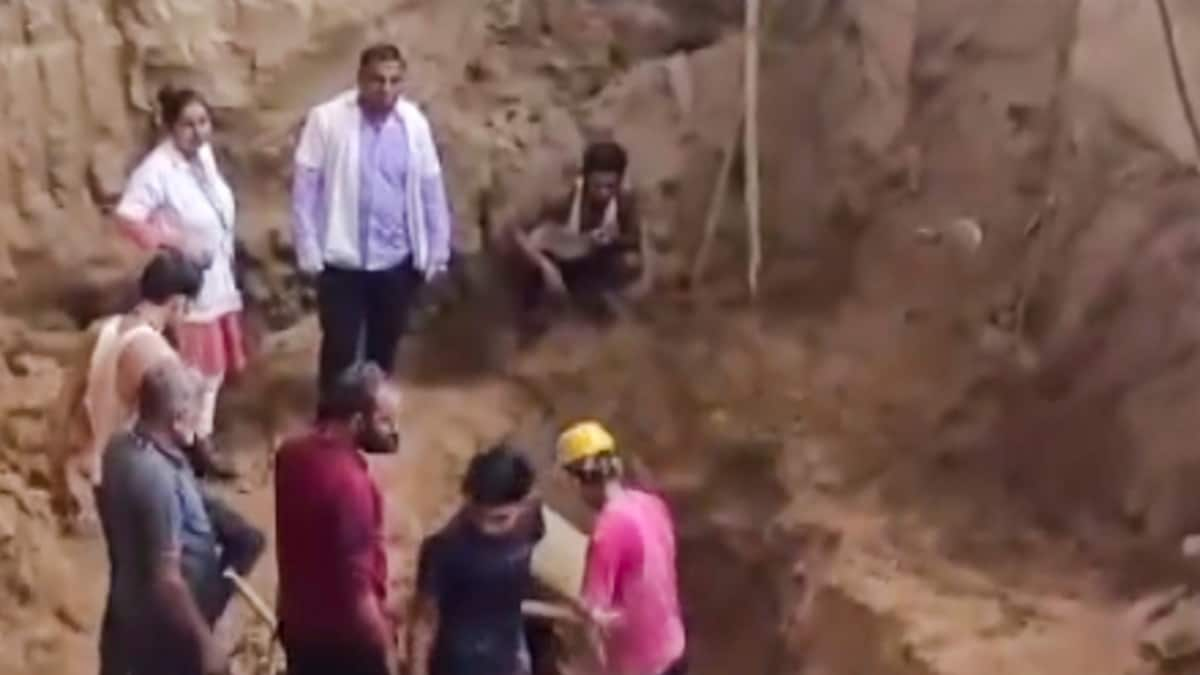The tragic wall collapse at a construction site in Gujarat’s Mehsana district on October 12, 2024, resulted in the loss of nine lives and left one person injured. The incident occurred at approximately 1:45 PM when a wall under construction at a private company’s building site in Jasalpur village collapsed, burying several laborers alive.
The Tragic Incident
The incident occurred while workers were digging a pit for an underground tank for a factory. The under-construction wall gave way, trapping the workers under the loose soil. Emergency services were immediately deployed to the site, and a rescue operation was launched to recover the bodies and locate survivors.
Rescue Efforts
Rescue efforts were hindered by the unstable conditions of the collapsed wall and the buried workers. Rescuers worked tirelessly to clear the debris and access the trapped individuals. While they managed to recover six bodies and rescue one 19-year-old boy alive, search and rescue efforts continued for the remaining missing laborers. The boy’s account provided information that there were 8-9 workers on site, meaning that several people were still unaccounted for. The district authorities and rescuers were hopeful of finding the missing workers alive, as their focus remained on rescuing them.
Public and Government Response
The news of the tragic incident prompted a wave of sadness and concern throughout India. Prime Minister Narendra Modi expressed his condolences, describing the incident as “extremely sad” and offering his prayers for the injured. He assured that the local administration was providing all possible assistance to the victims under the state’s supervision.
Financial Aid
To alleviate the burden on the families affected by the tragedy, the Prime Minister’s Office announced ex-gratia payments from the Prime Minister’s National Relief Fund (PMNRF). The next of kin of each deceased person would receive Rs. 2 lakh, while Rs. 50,000 would be provided to the injured.
Potential Causes of the Incident
While the precise cause of the wall collapse remains under investigation, several potential contributing factors may have played a role in this tragic event. These factors may include:
- Faulty Construction Practices: Inadequate design and construction techniques, insufficient structural reinforcement, and poor quality materials could have weakened the wall and led to its collapse.
- Neglect of Safety Measures: The absence of proper safety protocols, inadequate training for workers, and the lack of supervision during excavation and wall construction may have contributed to the tragedy.
- Lack of Permit/Inspections: It’s possible that necessary permits or inspections were not obtained for the construction project, or that safety standards were not properly monitored and enforced.
Lessons to Be Learned
The Gujarat wall collapse tragedy serves as a stark reminder of the importance of safety at construction sites. The incident underscores the need for strict adherence to safety regulations, robust oversight mechanisms, and thorough investigation into accidents to prevent similar tragedies in the future.
Takeaways
This incident highlights the importance of:
- Strict Enforcement of Building Regulations: Regulations and safety guidelines should be enforced rigorously, ensuring construction projects meet established safety standards.
- Prioritizing Worker Safety: Training workers on safety protocols and providing appropriate protective gear are crucial to reducing the risk of accidents.
- Independent Inspections: Regular inspections by qualified professionals can identify potential hazards and ensure adherence to safety standards throughout the construction process.
- Open and Transparent Investigation: Thorough investigations into construction accidents, including the involvement of independent experts, are essential for uncovering the root causes and implementing effective preventative measures.
The tragic Gujarat wall collapse serves as a stark reminder of the value of human life and the need for heightened vigilance when it comes to construction site safety. By taking the necessary steps to prevent such incidents in the future, we can honor the lives lost in this tragedy and strive for a safer working environment for all.




